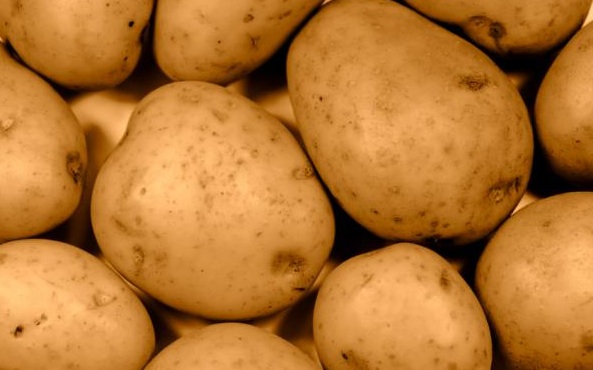
 NEWS HIGHLIGHT
NEWS HIGHLIGHT
Arsenic in irrigation water transferred to crops
A team of researchers has shown that potatoes irrigated
with arsenic-rich water can contain 35 times as much of the element.
May 20, 2009 – A team of researchers has shown that potatoes irrigated with arsenic-rich water can contain 35 times as much of the element.
 |
|
Scientists from the University of Valladolid (UVA) and the Salamanca Institute of Natural Resources and Agrobiology (IRNASA-CSIC) have also confirmed the impact of water with high arsenic content on beets and carrots.
“The objective of the work we carried out was to gain an understanding of the impact of arsenic-rich subterranean waters on soil and wheat, potato, sugar beet and carrot crops,” said Amerlia Moyano Gadini, a professor at the UVA’s University School of Agrarian Engineering and co-author of the study with other experts from the engineering school of the Spanish National Research Council’s (CSIC) IRNASA centre .
In order to carry out the study, which was published recently in the Journal of Environmental Monitoring, the scientists selected 23 sites located in the south of the province of Valladolid and the north of the province of Segovia, an agricultural region known for the presence of arsenic in its subterranean waters (between 38 and 136 micrograms per litre). The researchers analyzed the arsenic levels in both the soil and the four crops and compared the data with samples gathered from three control sites irrigated with water containing very little arsenic (five micrograms per litre or less).
The results show that arsenic levels, both in the ground (which reached levels of up to 36 milligrams per kilogram) and in the plants, were higher in the sites irrigated with water containing higher levels of this element in comparison to those in the control areas. The levels of dissolved arsenic in water reached 0.9 milligrams per kilogram in some samples, which is in excess of 0.04 milligrams per kilogram, the limit set for agricultural use.
The scientists found arsenic levels in the potatoes to be 35 times higher in the crops irrigated with arsenic-laden water. They also reached high concentrations in the beets (between 3.9 and 5.4 milligrams per kilogram).
“Arsenic accumulates particularly in the roots of these vegetables, probably as a defense mechanism,” said Moyano.
The researcher stressed that these levels “are not currently of concern for people who eat agricultural products from this region,” but the study does warn that the maximum safe limits could be exceeded in the case of wheat if people eat more than 400 grams per day or if wheat is combined with other vegetables from the region. This could pose a health risk.
Arsenic is a natural chemical element that may or may not be toxic to human beings depending on the dosage consumed and its origin. Arsenic combines with carbon and hydrogen in living beings to form organic arsenic compounds, which in general are not harmful. In the environment, however, this substance combines with oxygen, chlorine and sulfur, forming inorganic arsenic compounds, which are considered to be more toxic.
Prolonged exposure to high concentrations of arsenic (for more than 10 years) can result in arsenic poisoning, the most common symptom of which is skin alterations, although in some serious cases it can lead to various kinds of cancer such as skin, lung and kidney cancer. Natural arsenic contamination is a problem in countries such as Argentina, China and the United States.
The maximum level of arsenic permitted in water for human consumption in Spain and the rest of the European Union is 0.01 milligrams per litre and the World Health Organization (WHO) recommends this figure should not be exceeded. Levels of more than 0.05 milligrams of arsenic per litre of water (irrigation water rather than that for human consumption) were detected in all of the sites analyzed in this study, with some levels as high as 0.136 milligrams per litre.
Moyano says the high arsenic content in the subterranean water in the study area is not sue to pollution caused by human activity but that it is rather a geological anomaly caused by the chemical features of the water in the region’s aquifer. The relevant departments in the regional government of Castilla and OeUn are now working to mitigate the problem.
Print this page